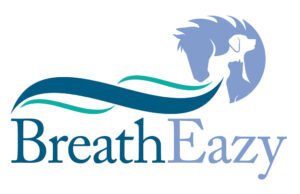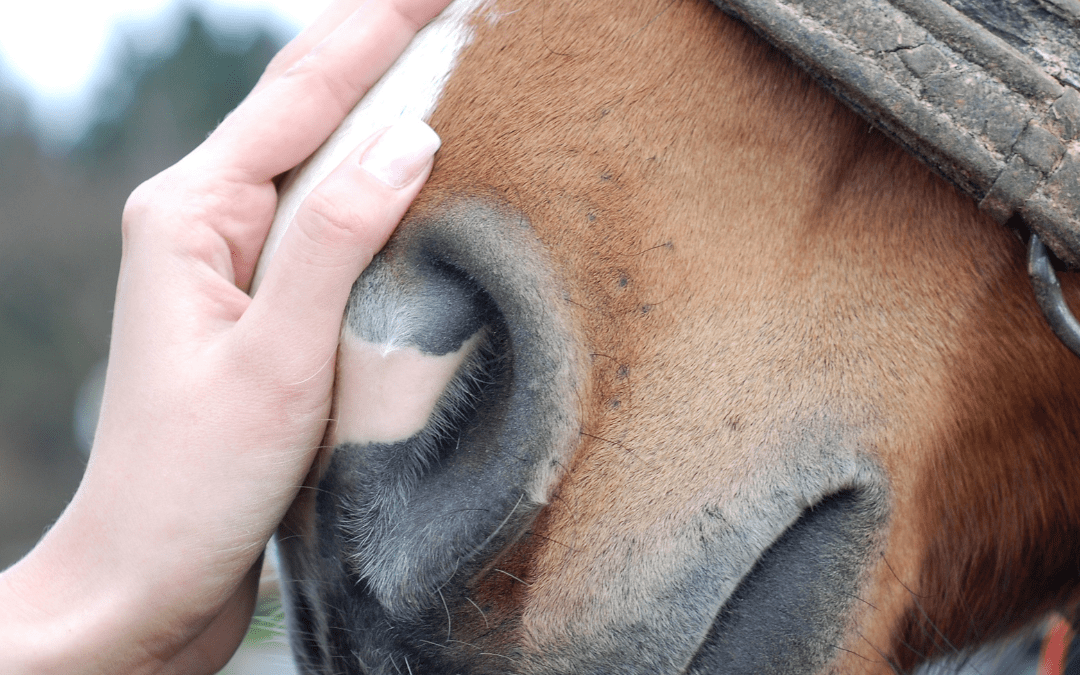Introduction
Equine asthma, commonly known by the equine community as ‘heaves’, is a lot more common than you might think, and certainly quite debilitating for horses let alone stressful for their owners if not controlled properly. It can be quite a confusing disease, as some horses are affected in winter, and some in spring or summer. So, what really causes asthma in horses, what does it look like and how can we treat it most effectively? Read on to learn the latest in equine asthma’s veterinary management.
What Is Equine Asthma
Equine asthma is the updated terminology for describing what was previously known as inflammatory airway disease, recurrent airway obstruction and summer pasture-associated recurrent airway obstruction (Léguillette, 2021). Equine asthma is the umbrella term that describes non-infectious inflammatory respiratory disease caused by hypersensitivity in the lungs to airborne particles such as dust, moulds and pollen (University of Saskatchewan).
If you’re talking to your vet about your horse with equine asthma, they will usually split it into two categories: dust-related asthma and summer pasture-related asthma. One is caused by horses staying in dusty and mouldy stables for longer periods during the winter and the other by spring and summer pollens and dust in the field.
What Are the Symptoms of Equine Asthma
Equine asthma symptoms include:
- Increased respiratory rate
- Coughing
- Wheezing
- Nasal Discharge
- Poor performance/exercise intolerance
- Lethargy
- Heave lines
These clinical signs might be caused by other respiratory diseases such as serious bacterial or viral infections. Therefore, it is really important that your horse gets a veterinary examination to make sure it isn’t something that would necessitate isolation from other horses or more immediate intensive treatment.
How Do You Diagnose Asthma in Horses?
Your veterinarian will talk through the best options for diagnostics depending on your horse’s presentation and situation. They will perform a thorough examination including auscultation of the lungs and trachea, listening for coughs, counting respiration rate and taking their temperature.
The gold standard for diagnosing equine asthma is by your veterinarian performing a tracheal wash and broncho-alveolar lavage (Liphook). This is a procedure done under sedation and involves placing a scope and catheter up your horse’s nose, down into the trachea and collecting the cells in a fluid sample there and in the bronchi.
This sample will have a cytological analysis performed on the cells and the proportion of different white blood cells, typically high neutrophils, will indicate equine asthma. The sample will also often be tested for bacteria (culture) or viruses (PCR) that could be causing your horse’s symptoms.
Equine Asthma Treatment
Environmental Management
The treatment for heaves in horses is varied and very much depends on what is suspected as the original trigger. Mild asthma can often be treated with management changes. For example, if a horse presents with equine asthma and has been on box rest in a dusty stable and straw bedding when they would normally be turned out for most of the day. It would be recommended to increase their turnout time, swap straw for dust-free shavings, hose down the stable walls, windows and ceilings to get rid of the dust and mould spores and soak their hay and feed thoroughly.
That goes the same for summer-pasture-related asthma. Management changes such as stabling in the daytime, turning out at night, making sure the horse isn’t turned out in a field near a new farmed crop or harvesting, and soaking hay and feed are really important.
When faced with an equine asthma case, especially if it is mild, management changes should always be discussed and implemented first and can be extremely effective.
If these changes have been unsuccessful in totally resolving the horse’s clinical signs, then it is time to look to medical equine asthma treatment. However, good environmental management must be maintained.
Medical treatment
There are two main drug types we can use to treat heaves in horses: bronchodilators and corticosteroids, and these may be used separately or in combination.
Bronchodilators
Bronchodilators relax bronchospasms, so when a horse is struggling to breathe, these will open up the airways, allowing deeper breaths and therefore more oxygen to enter the lungs. These are given either in oral or injectable forms. Clenbuterol (a commonly used bronchodilator) also has a useful side effect of reducing the amount of mucous production.
In cases of respiratory distress (the equivalent of an asthma attack), a quick-acting intravenous injection of a bronchodilator such as clenbuterol is necessary to provide immediate relief, but most horses can then be maintained on oral clenbuterol afterwards if necessary.
Corticosteroids
The other type of medical treatment for heaves in horses is corticosteroids. Corticosteroids dampen the body’s immune response to the asthma trigger e.g., dust, pollens etc. There is an option to give systemic dexamethasone via IV or IM injection, and this has significant evidence which proves it positively influences clinical signs and lung function in horses with equine asthma. However, although effective, dexamethasone injections are only a short-term treatment option for most horses for practical reasons.
Oral prednisolone is the only licensed oral corticosteroid in horses in the UK and is a great longer-term ‘at-home’ treatment option for horses suffering from equine asthma. It has been shown to have some efficacy in improving the lung function of horses with severe asthma even when kept indoors, but better in those with better-maintained environments (AAEP, 2021).
For a lot of the horse population in the UK (heavy, native breeds), systemic corticosteroids increase the risk of laminitis, and although the risk is very small, overweight, insulin resistant or post-recent-laminitis horses should be treated with caution (Cornelisse and Robinson, 2013).
A great option for these horses or if basic oral therapy isn’t controlling the asthma enough is inhaled corticosteroids via nebulisers and inhalers. Inhaled corticosteroids present the advantage of having a local airway anti-inflammatory effect, while potentially decreasing systemic absorption (Léguillette, 2021). The medication is targeted directly to the lungs and small airways.
Nebulisers are tolerated a lot better by horses than you might imagine and are very easy to use once trained by your veterinarian. Once you’ve got the horse set up, and the nebuliser turned on, you can just leave the horse to be loosely supervised as long as they’re settled in the stable, and it normally takes no more than ten minutes to administer the drug.
The Flexineb nebuliser comes in 3 different sizes that allow almost all horses to use one that fits snugly and appropriately. There are a variety of different corticosteroids that can be used in nebulisers. Still, fluticasone is the more widely nebulised drug, with horses treated having been shown to have a significant improvement in pulmonary function after 2 weeks’ treatment (Couetil, 2005).
Nebulised saline has also been known to have beneficial effects on the respiratory system and can be included in the treatment plan when your veterinarian is trying to taper down the amount of nebulised corticosteroids. It can also be given as maintenance or prevention of future flare-ups once your horse no longer relies on medication.
Conclusion
Heaves in horses can be a long and difficult disease to treat, and as there are so many variables in a horse’s environment that might be contributing, it is often impossible to cut out all triggers that can affect horses. However, good and consistent managemental changes can make all the difference in treating these cases, and most drugs (whatever your veterinarian decides to use for your horse) will not be anywhere near as effective without them.
You can find out more about the Flexineb nebuliser here

